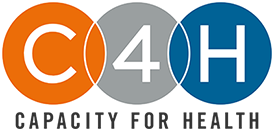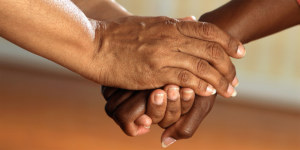Nonprofits solve problems. Whether it’s the global fight against HIV, working toward equality, improving public health, or another worthy cause, finding solutions to challenges is embedded at the core of every organizations’ mission… and taking a design thinking approach represents an innovative path.
But what is design for social impact, and how can design thinking nonprofits best utilize this approach’s tools and strategies to drive success? Read on to learn more about how your nonprofit can use design for social innovation.
What is Design for Social Impact?
Design for social impact stems from design thinking, which encompasses a set of strategies and methods that focus on the process used to achieve a result, as well as the result itself. The design thinking process is as follows:
- empathize
- define
- ideate
- prototype
- test
When a product is created, designers consider ways to make it work best for its end users. Through a repeatable process (brainstorm ideas, test, garner feedback, evaluate results, revise and repeat), designers discover what their clients need and attempt to come up with innovative ways to make it better.
Design thinking encourages problem-solvers to be creative, to explore, to suggest the unconventional. Most importantly, design thinking requires attempts to see the issue through the perspective of those being served. This human-centered approach provides a practical and replicable way to solve problems, thus driving innovation.
Focusing on the process when seeking and designing solutions also means accounting for the potential impact on those who may be affected along the way. This puts the people you serve at the center of your problem-solving efforts… and that’s where design thinking nonprofits can benefit most.
Design for social impact (DSI) takes it a step further, mindfully incorporating the systems that contribute to problems — e.g., economic, social, political and institutional structures — into strategizing. Analyzing power structures through observation and feedback allows for better identification of opportunities to benefit those who are marginalized by those systems.
Just as when a new product is created, asking “why” is key. Why do these users need this product or service? Understanding the core issues that underlie a problem or need help problem solvers to find solutions that actually work for users.
Consider, for instance, examples from the Index Awards “Designs to Improve Life” Category:
- Smart syringes that warn of prior use
- A global social media platform that targets homophobia and brings the LGBTQ community together
- Drones that deliver blood and vaccines to rural areas within 35 minutes
- An ocean farming system that protects ecosystems, mitigates climate change, and creates fishing jobs while feeding communities
- A portable eye examination kit that allows anyone with a smartphone to perform eye exams
Ways to Get Started with Design for Social Innovation
How can design thinking nonprofits implement DSI? Start by framing the challenge you wish to design a solution for. Your goal: to express what you want to do in a single sentence. That sentence can then be used to spark inspiration and brainstorming.
A good sentence will drive you toward your desired impact, allow space for multiple solutions, and account for both constraints and specific context. Once you’ve found a challenge sentence that’s not too narrow or too broad, revisit it again. If your team is able to come up with multiple solutions in a few minutes, you’re on a good track.
Now you can create a project plan that includes a timeline, available and needed resources (such as staff, space, funds, time, skills, etc.), and your to-do list. While this is a dynamic plan that will change over time, rather than a concrete document, try to answer as many questions and include as many details as possible.
How can your nonprofit utilize design for social innovation? Contact Capacity4Health to learn more about innovative ways to help your organization grow.




